Samsung's 2021 TV lineup finally brings Micro LED home
Ahead of virtual CES, Samsung announced its high-tech plans for your home theater in 2021.
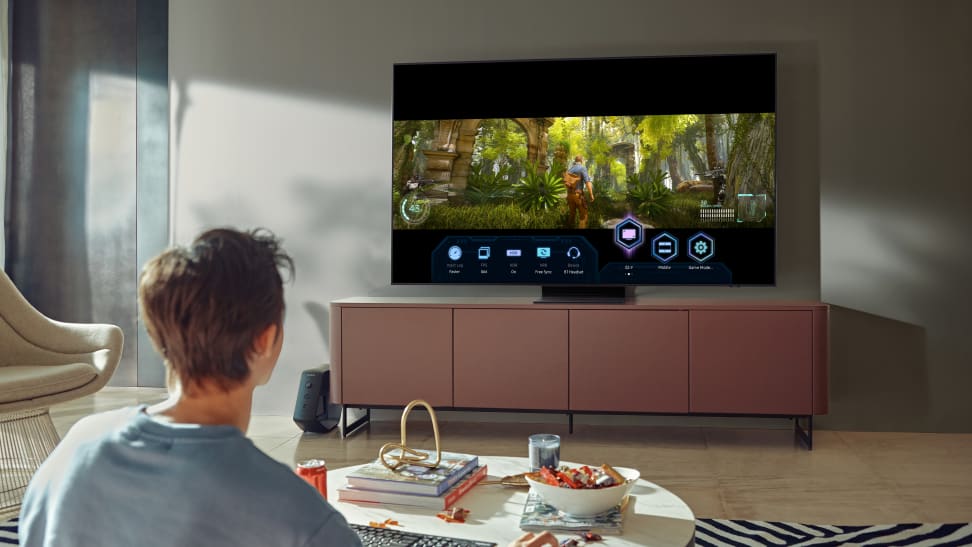 Credit:
Samsung
Credit:
Samsung
Products are chosen independently by our editors. Purchases made through our links may earn us a commission.
CES 2021 is kicking off virtually next week and, as usual, Samsung pre-empted the show by way of its "First Look" event. The South Korean tech giant often goes all-in during the biggest tech show of the year, and 2021 is no exception. While we haven't seen the products in person yet, Samsung's plans for TV and home theater are exciting nonetheless.
The big feather in Samsung's TV cap this year looks to be MicroLED, a kind of modular display technology that the company first unveiled in 2018. Three years on, however, Samsung seems confident that 2021 will be the year MicroLED tech finally starts to make its way into consumers' homes. The company also debuted an upgrade to its QLED TV composition called "Neo QLED," offered a glimpse of new 2021 soundbars, and promised commitments to eco-sustainability via new TV remote designs and better eco-packaging.
MicroLED TVs for everyone
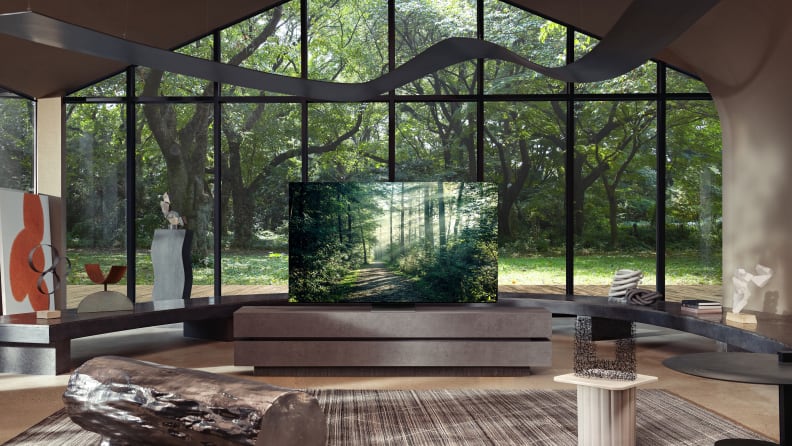
Samsung hopes 2021 will be the year MicroLED TVs come to consumers' homes.
The headline announcement regarding Samsung's 2021 home theater lineup is definitely MicroLED. While this tech debuted as a modular TV structure requiring professional installation a few years ago (dubbed "The Wall"), Samsung has stated that "in 2021, the promise of MicroLED comes home."
Back in December, Samsung first announced a 110-inch version of its MicroLED tech; today's First Look event showcased an 88-inch and 99-inch variant. Allegedly, these TVs will be available in traditional TV form factors that won't require professional installation—simply "take it out of the box and mount it," though with TVs this big you may want to ask a few other people for help with that.
For AV enthusiasts, Samsung has touted some fairly big claims for what its MicroLED TVs will be capable of: "infinite contrast" (not a first in this industry), compelling HDR performance with brightness up to 2,000 nits; 20-bit grayscale processing; object tracking sound; and, even, a multi-view functionality allowing you to watch four sources of content simultaneously.
Yet for enthusiasts and more casual carousers, what's more interesting that the proposed picture quality is how these MicroLED TVs function in physical space. The modular design gives them a claimed 99.99% image-to-body ratio (meaning there's essentially no border around the screen), while also allowing multiple sources to be routed to various parts of the screen. Samsung stated that "a 110-inch [MicroLED] screen can become four 55-inch screens."
As usual, pricing and availability haven't been confirmed, but we're pretty certain about three things: These MicroLED TVs will be rather expensive; they have to be mounted on the wall; and they could potentially usurp OLED's spot as the king of display technology.
Neo QLED = QLED + mini-LED
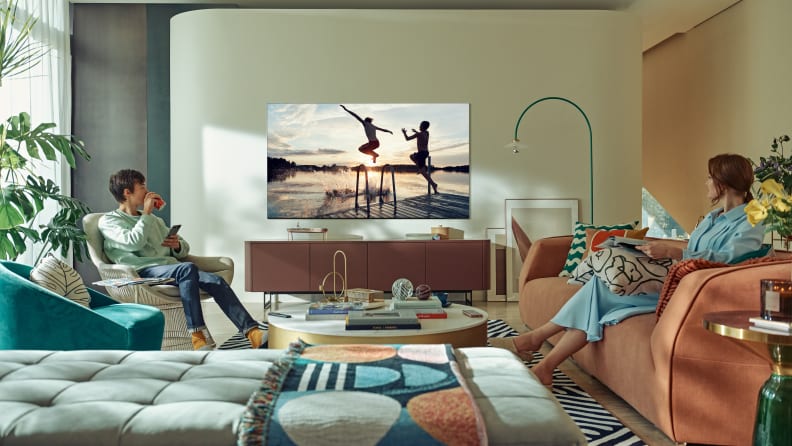
Samsung has a new name for its top-tier LED TVs: Neo QLED.
For the last several years, Samsung's "QLED" TV lineup—meaning LED/LCD TVs equipped with quantum dot technology—has filled out the company's top-tier models. In 2020, Samsung's QLED lineup included three 8K TV series and a wealth of mostly impressive (but sometimes slightly overpriced) 4K/HDR options. In 2021, Samsung is claiming to have made enough changes and improvements to boast a slightly modified moniker: Neo QLED.
What makes these new QLEDs so neo—er, new? Apparently, it's a new, more efficient LED backlight (the light emitting diodes that pass through the liquid crystal in every LED/LCD TV). The smaller LEDs—something many other TV brands are calling "mini-LED" this year—enable more a focused and precise plane of lights behind the screen, allowing for better local dimming, better power distribution, and fewer layers and substrates between your eyes and the light source.
On paper, this has many advantages, including purer color peaks, better lateral light diffusion (read: improved viewing angles), and better overall HDR performance. Samsung's QLED TVs were already some of the brightest we've ever seen, so it's exciting to consider how they'll perform with the proper utilization of mini LEDs this year.
Samsung also stated that it had designed new processors—called "Quantum Processor"—to conduct tasks like optimizing 8K resolution performance, and implement object-tracking sound. Like the MicroLED options, the model names (SKUs) and pricing haven't really been finalized yet, though the press release does mention a "Q900," the ongoing model identifier for Samsung's flagship 8K series.
Update: The flagship 8K QLED is the Q900A. The flagship 4K QLED is the Q90A.
Soundbars
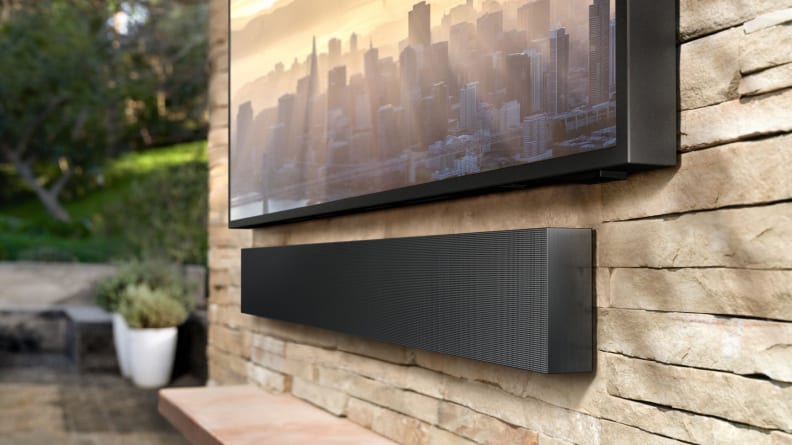
Samsung hasn't said much about its 2021 soundbar lineup just yet.
So far, Samsung has been rather tight-lipped about its soundbar lineup. We do know there will be new soundbars, and that the company has added Bass Boost and Tap Sound functionalities, enabling a 2dB low-end frequency bump and the ability to tap your phone to play music, respectively.
However, the official First Look event made zero mention of soundbar innovations and no model names have been revealed as of yet. Check back soon for more info on Samsung's 2021 audio offerings.
The Frame, new services, and eco-packaging
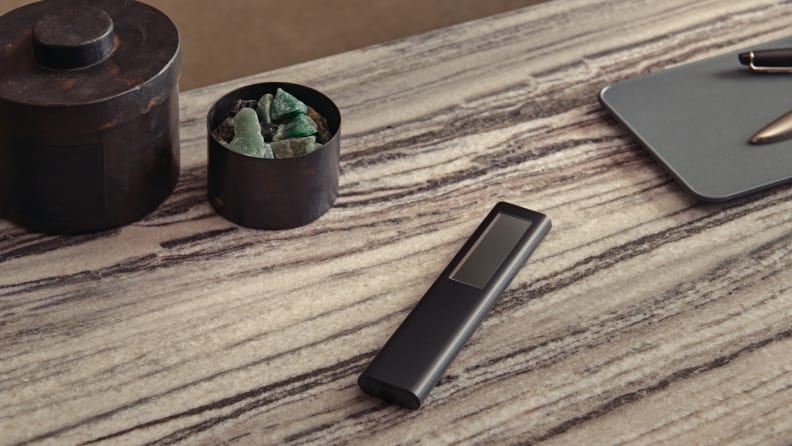
Samsung is focusing on eco-sustainability for its 2021 home theater products.
While the advent of consumer-facing MicroLED TVs and Neo QLED will likely be the stars of our Samsung TV coverage this year, Samsung also announced a new addition to its "The Frame" line of lifestyle, art-focused TVs, which will now be available in a 43-inch size. The new 43-inch Frame can be rotated between landscape and portrait orientation, a first for the series.
Additionally, the company detailed a few ecosystem improvements—less flashy, but worth taking note of.
Google Duo/Screen Mirroring: Almost definitely in response to the pandemic/quarantine procedures plaguing the world during most of 2020, Samsung announced that it will enable Google Duo (high-quality video calling for up to 12 participants) screen mirroring on TVs.
Remote Access Plus: This feature allows for a streamlined method of connecting peripherals, like a mouse or keyboard, to Samsung TVs. A proprietary PC app streamlines the process of accessing your desktop on your TV.
Multi-View: The multi-view functionality detailed with regard to the MicroLED TV (watching multiple sources on one screen) will also be available for all QLED model TVs. Originally limited to two simultaneous screens, the new Quantum Processor ups the count to four. Groovy.
Samsung Health Smart Trainer: This is a feature that allegedly "turns your home TV into a personalized gym experience" — another nod to quarantine life, we're sure. An AI trainer will check your posture and count your reps during workouts. This feature syncs with the Samsung Health app that's installed by default on most Galaxy devices, automatically syncing between them.
Super Ultrawide Gameview / Game Bar: Possibly a huge deal for particular gamers, this setting allows games (via compatible source hardware, anyway) to be played in the Ultrawide (21:9) aspect ratio, and Super Ultrawide 32:9 ratio. The "Game Bar" setting apparently lets gamers make critical performance adjustments on the fly, such as switching aspect ratios, connecting Bluetooth headsets, or checking input lag numbers. Sounds useful for reviewers, too. ...
Eco remotes/eco packaging: Samsung's new "Eco Remote Control" is honestly really cool: It uses solar cells to recharge its batteries, and allegedly lasts for up to two years. Samsung is also continuing to focus on sustainable and minimalist product packaging, avoiding traditional oil-based ink designs.
While we're still holding out for information about TV model names, the full Neo QLED lineup, and any pricing information, the availability of MicroLED for consumers and improved QLED models should make for an exciting year of TV testing. Stay tuned over the next couple of weeks for all of our virtual CES 2021 coverage and our picks for CES 2021 Editors' Choice awards.


